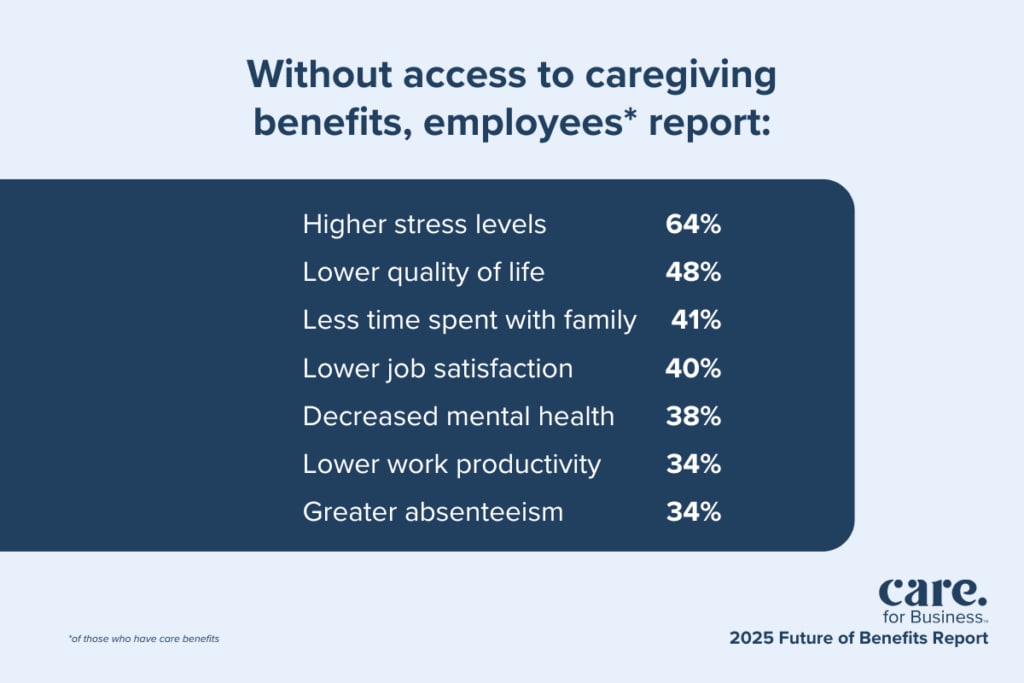Burnout is top of mind for employers in 2025. According to our latest Future of Benefits Report, 84% of employers say burnout has a moderate to high impact on retention. But too often, the go-to response is PTO. The thinking goes: Offer more vacation days and employees will recharge, reset, and return refreshed. But here’s the reality: burnout isn’t solved by a long weekend. Especially not for the 73% of U.S. workers who are also caregivers.
Burnout is deeper than fatigue
While employers recognize burnout, many underestimate how widespread it is. There’s a 24-point perception gap: 69% of employees report being at moderate to high risk of burnout, but employers estimate that risk at just 45%.
From return-to-office mandates to economic uncertainty, the workforce in 2025 is carrying more than just their workload. Stressors like financial pressure, shrinking benefits, and (here comes a big one) caregiving responsibilities are colliding in ways that make sustained recovery difficult.
For many employees, especially those in the “sandwich generation,” burnout stems less from their workload and more from the emotional and logistical strain of caregiving. PTO offers temporary relief, but it doesn’t reduce the mental load they’re carrying.

The everyday care crunch is where burnout builds
According to our 2025 Cost of Care Report, the average parent is juggling five different care arrangements. And caregiving stress isn’t limited to parents; caregiving for aging loved ones, pets, and even self-care responsibilities all compound.
When employees (especially parents and those helping care for their parents) use time-off, they often use it to manage care, not to rest.
And when they come back to work? The stress picks right back up. The report shows that employees without caregiving support experience higher stress levels, lower quality of life, and lower job satisfaction.

Real burnout prevention happens between vacation days
The most sustainable, effective way to reduce burnout isn’t offering more days off. It’s supporting employees in their day-to-day lives. Care benefits create meaningful impact by reducing stress, improving mental health, and helping employees stay present and productive at work.
Employees with caregiving benefits (child care, senior care, and even pet care, for example) report 45% higher productivity and 40% lower absenteeism.
What employers can do next
To support employee mental health in a way that lasts, HR leaders and benefits brokers should look beyond PTO and toward integrated care solutions:
- Provide access to support for parents, caregivers, pet owners, and more
- Close care gaps with backup care plans
- Offer flexible financial support like care spending accounts
- Provide access to expert guidance to help employees navigate life’s big (and small) challenges
The bottom line? PTO is important, but it’s not a comprehensive solution for burnout. Empowering employees with the tools to manage care more easily is the path to a healthier, more resilient workforce.
Get in touch to discover how Care for Business helps reduce burnout and support your team, day in and day out.


